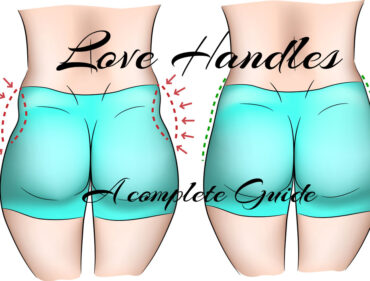Home Remedies for Vaginal Yeast Infection
When faced with Vaginal yeast Infection, your first reaction would certainly be centred on how to treat and get rid of the itchiness as fast as humanly possible. Vaginal yeast infection which is also called Vulvovaginal candidiasis is caused by an overgrowth fungus that naturally lives in the vagina.
This fungus is called Candida Albicans. The fungus thrives in moist, warm, folded areas of the skin such as the groin, under the breast, or the armpits. While this infection is a common occurrence, they can be very embarrassing for women especially with the discomfort that comes with itching now and then. Studies showed that yeast infections are common and affect 75% of women at some point in their lifetime.
What are the symptoms of Vaginal Yeast Infections?
The common symptom of Vulvovaginal candidiasis is itching, Others include;
- Burning of the vaginal area due to intense itchiness.
- A discharge which is usually thick and has a cottage-cheese-like consistency
- Painful urination
- Painful sexual intercourse
- Irritation
Also, stress, poorly controlled sugar, and excessive intake of antibiotics can leave you susceptible to an overgrowth of fungus. A situation whereby the normal protective bacteria are eradicated by antibiotics used to treat urinary tract infection or any other infection, the yeast would multiply, invade the tissues and cause irritation of the lining of the vagina.
Other known conditions that might predispose women to develop a vaginal yeast infection are diabetes, pregnancy, and taking of oral contraceptives. The use of douches or perfumed spray and soaps may also increase a woman’s risk of having a yeast infection. It should be noted that vaginal yeast infection is not the same with sexually transmitted infections (STIs).
HOME REMEDIES FOR VAGINAL YEAST INFECTIONS
Although it is very advisable to visit your gynaecologist for diagnosis and a possible prescription for treatment of this infection, there are a couple of ways to naturally treat minor vagina yeast infections at home. The most common treatment is with the use of fluconazole (a prescription pill that is very effective with treating yeast infection) and/or use of Miconazole – an over-the-counter cream that can be applied on the vagina to relieve itchiness.
Natural home remedies are…
Probiotics: These contain healthy bacteria that might keep yeast levels in balance. They are found naturally in some foods, as well as in some over-the-counter supplements in the form of pills, powder, and liquids. The bacterial strain can secrete different proteins in the body that help to fight infection and inflammation while it’s inside the body.
Many fermented foods contain probiotics, the most popular being yoghurt, cornmeal is also known as ‘Ogi or Pap’, ‘Ugba’ also called Ukpaka made from oil bean seed, ‘Iru’, the locust bean popularly used for cooking by most Nigerians and palm wine.
Coconut Oil: This oil is said to have anti-bacterial properties which may make it an effective treatment for yeast infections. You can treat a yeast infection by simply applying coconut oil to the affected area. Rub in the oil to the skin or skin fold where the yeast infection is.
Boric Acid: Boric acid is a white powder or crystalline solid that acts as a strong anti-viral and anti-fungal agent in the body. A recurring or chronic yeast infection may be treated with Boric acid suppositories.
According to Centres for Disease Control and Prevention, topical boric acid is recommended for the treatment of vaginal yeast infection. Research shows that boric acid has been used for over 100 years for the treatment of this infection.
Also, the CDC recommends using capsules that each contain 600 mg of boric acid once a day for 2 weeks. Boric acid medications are usually affordable. They are available for purchase over the counter at drug stores and/or pharmacies.
Tea tree oil: This is another effective natural anti-fungal oil that may be used to treat vaginal yeast infection. It is to be applied to the affected vagina body area with caution as it can be very sensitive to the tissue that is already inflamed and, in some cases, can hurt delicate tissues.
Tea tree oil can be gotten from an online store like Jumia. The process of extracting the oil is rigorous and one might not want to go through that. It’s always better to buy from a drug store or an online mart.
Apple Cider Vinegar bath: This can be used as a supplementary treatment or preventive measure to maintain or shift the PH balance of the vagina to inhibit yeast growth. To use this, add a cup of APV to a warm bath and soak for about 20 minutes.
Vitamin C: Apart from boosting the immune system, vitamin C helps the body to restore its natural balance. It is anti-microbial so it halts the growth of yeast causing fungus. Vitamin C (also called ascorbic acid) has anti-microbial components, so some women add it to their diet to treat Candida overgrowths. Try increasing your intake of vitamin C to boost your body’s ability to beat the yeast infection.
Note: Do not apply the acidic vitamin C to the sensitive vaginal tissue.
Garlic: In this 2005 study, garlic was shown to be an effective Candida killer. Garlic is known for its antibiotic qualities. Allicin — the major biologically active component of garlic exhibits anti-bacterial and anti-fungal properties and is used in the treatment of Vaginal yeast infections.
Some suggest inserting the garlic in the vagina while this study showed that it is best when added to the diet or food intake. There are also over the counter drugs that contain garlic.
WHAT YOU SHOULD NOT DO ABOUT VAGINA YEAST INFECTIONS
- Do not apply yoghurt directly on your vagina. Yoghurt should not go anywhere except your mouth.
- Do not rely solely on the above-mentioned home remedies if symptoms persist. Kindly visit your gynaecologist for professional help.
- Do not confuse your vagina to be a medicine or kitchen cabinet. It is not a dumping ground for everything you read on the internet.
Finally, maintaining good hygiene is a great step towards preventing vagina yeast infection. Avoid wearing damp undies. Try to iron your underwear before using them especially if they did not dry under the sun. You should not practice everything you read on the internet on your vagina.
If you are looking to jump onto hot trends, then you might as well buy some flashy clothes, boots, or pink hairs but be extremely cautious when it comes to matters concerning your vagina.




